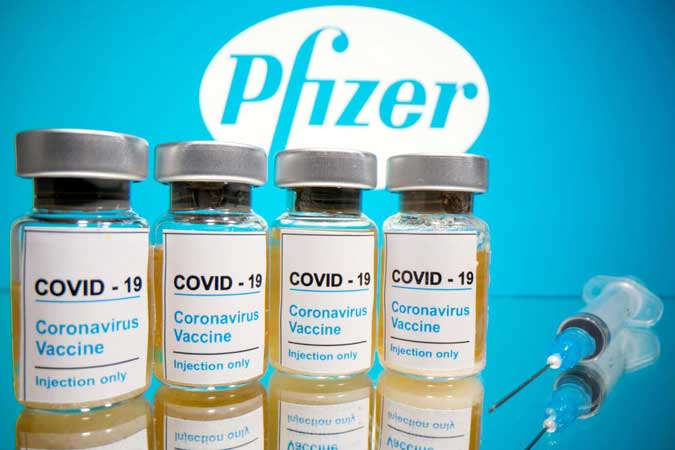AUSTRALIA’S recession is technically over, but far from buried. Deep scars in economics and politics won’t be easily overcome, no matter how many campfire stories leaders tell about the three-decade expansion that ended with the pandemic. They’ll have to struggle mightily to achieve half as good a result over the next 30 years.
Some of the hurdles to a well-rounded comeback are shared with other economies, such as elevated unemployment and the prospect of a lasting change in consumer behavior. The more corrosive obstacles are closer to home: a region where growth was off the boil long before COVID-19 (coronavirus disease 2019); a greatly diminished flow of immigrants; and a breakdown in relations between the federal government in Canberra and rebellious state administrations.
The latest gross domestic product (GDP) numbers landed Wednesday against this sobering context. The economy grew 3.3% in July to September from the previous quarter, the Australian Bureau of Statistics reported. That followed slides of 7% and 0.3% in the first and second quarters, respectively. Like most countries, Australia defines a recession as two consecutive quarters of contraction. From a year ago, growth was down 3.8%.
That’s a more robust bounce than the initial revival from the last downturn in 1991. The current spurt was enabled by muscular fiscal and monetary stimulus and a lifting of crippling lockdowns. Social distancing rules have been eased. Prime Minister Scott Morrison hopes to relax curbs on travel by the year-end holiday break.
This masks an international backdrop that’s nowhere near as promising as three decades ago. Back then, Australia was emerging into an advantageous Asian and global environment. China drove demand for raw materials and, eventually, sent capital and tourists Down Under. Southeast Asia clocked giddying growth rates until the 1997-98 financial crisis. The US was buoyed by a technology revolution and, with the end of the Cold War, presided over an economic and financial architecture that encouraged unfettered flows of capital and goods.
All Australia really had to do was not get in the way. The long, recession-free years that followed saw the country withstand the global financial crisis of 2007-2009. Federal Reserve Chair Jerome Powell mused two years ago at an Economic Club of New York lunch (I was there and struggled not to roll my eyes) that the business cycle had ceased to exist in Australia.
It won’t be so easy this time.
Global GDP will shrink 4.4% this year and rebound 5.2% in 2021, the IMF says in an assessment loaded with caveats and risks. World travel is crippled. China’s economy may be up and running, but these are the years of 5% to 6% growth, not double digits. Relations have soured to their lowest ebb since the 1970s, with Beijing imposing a raft of restrictions on Australia’s exports of wine, coal, copper, and barley.
A largely unsung hero of Australia’s expansion has been immigration, helping the population grow at an average annual rate of about 1.5% over the past two decades. Just under 30% of Australians were born overseas, compared to around 14% in the US, according to Pew Research Center. Uncertainty over when borders will reopen and the rate of new arrivals weigh on the economic outlook. “If population growth is to be noticeably slower in a post-COVID world, the trajectory for our economy will look different, too,’’ Philip Lowe, governor of the Reserve Bank of Australia (RBA), said in a recent speech.
It’s tough enough for even Australians to get into the country now, Lowe quipped. It’s also tricky to move around once inside. This gets to a simmering challenge on how Australia is governed. After early unity, the pandemic has created enormous strain between Morrison’s federal government and the leaders of the six states and two territories. The independent streaks they’ve shown in shutting internal borders and operating their own variations of distancing and lockdowns has long-term effects.
The states have been largely able to do their own thing because of compromises hatched at Federation in 1901. States kept control of hospitals, schools, police, and degrees of interstate commerce. For much of the last century, state power retreated, especially after World War II, when federal income tax was hiked. State income tax was phased out and replaced by grants. Canberra had power of the purse; the states basically did what they were told. Former Prime Minister Paul Keating observed: “Never get between a premier and a bucket of money.”
The states are learning that defying Canberra can have a different kind of payoff. Closing borders has proven popular; local voters don’t want COVID-19 coming in. Queensland Premier Annastacia Palaszczuk looked like she’d lose her bid for re-election. Then the virus came along. She proceeded to run one of the toughest border regimes of the pandemic, and easily saw off her challenger. Western Australia Premier Mark McGowan, who has effectively sealed off half the continent, is the most popular politician nationally. His approval rating approached 90% a few months ago.
Secession is a stretch*, but more contested and fractured politics is in Australia’s future. McGowan says he doesn’t favor a break, but has proudly talked of his forging an “island within an island — our own country.’’ Thumbing your nose at those no-good Canberra politicians has never been unpopular in some states, but the pandemic gave that approach more potency.
When COVID-19 recedes, I’d love to see Morrison or a successor stare down recalcitrant provinces: You like it so much by yourself, fine. Pay for your own military, negotiate your own treaties, establish your own central bank, and run economic policy, and so on. You’ll never hear a state leader acknowledge this, but the RBA helped keep provincial borrowing costs low this year by purchasing state debt as part of its quantitative easing program.
The coronavirus slump will live on, beyond quarterly math. It would be sad if Australia becomes more insular and risk averse, growing slower and less resilient to swings in fortune.
*In 1933, Western Australians did actually vote to secede, but the split required assent from the UK parliament, which wasn’t given. The issue lost momentum and was drowned out by World War II.
BLOOMBERG OPINION


